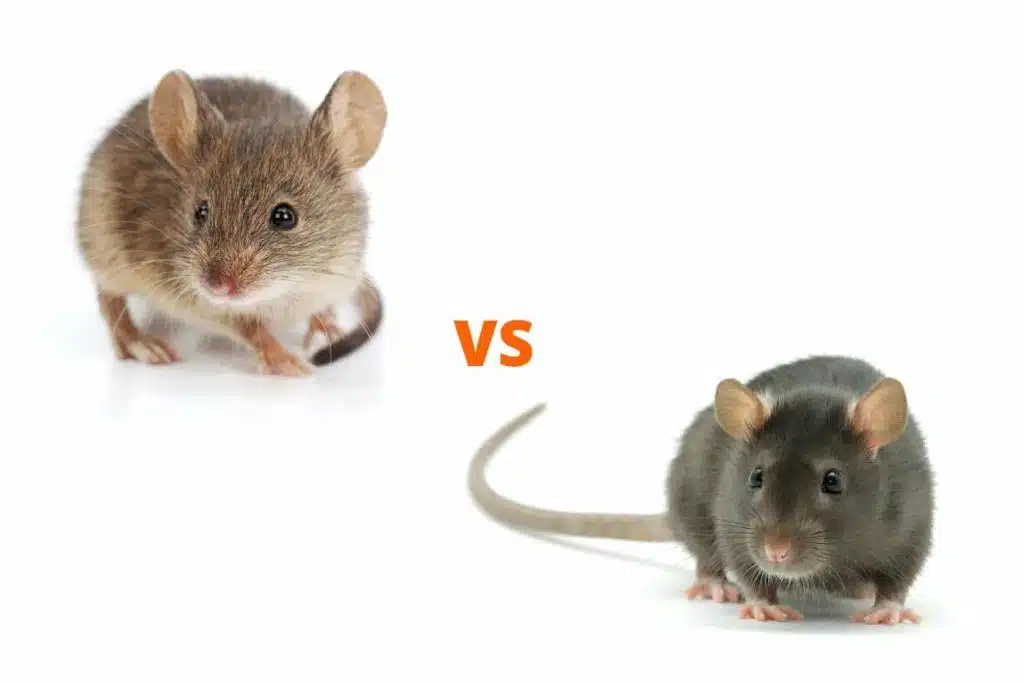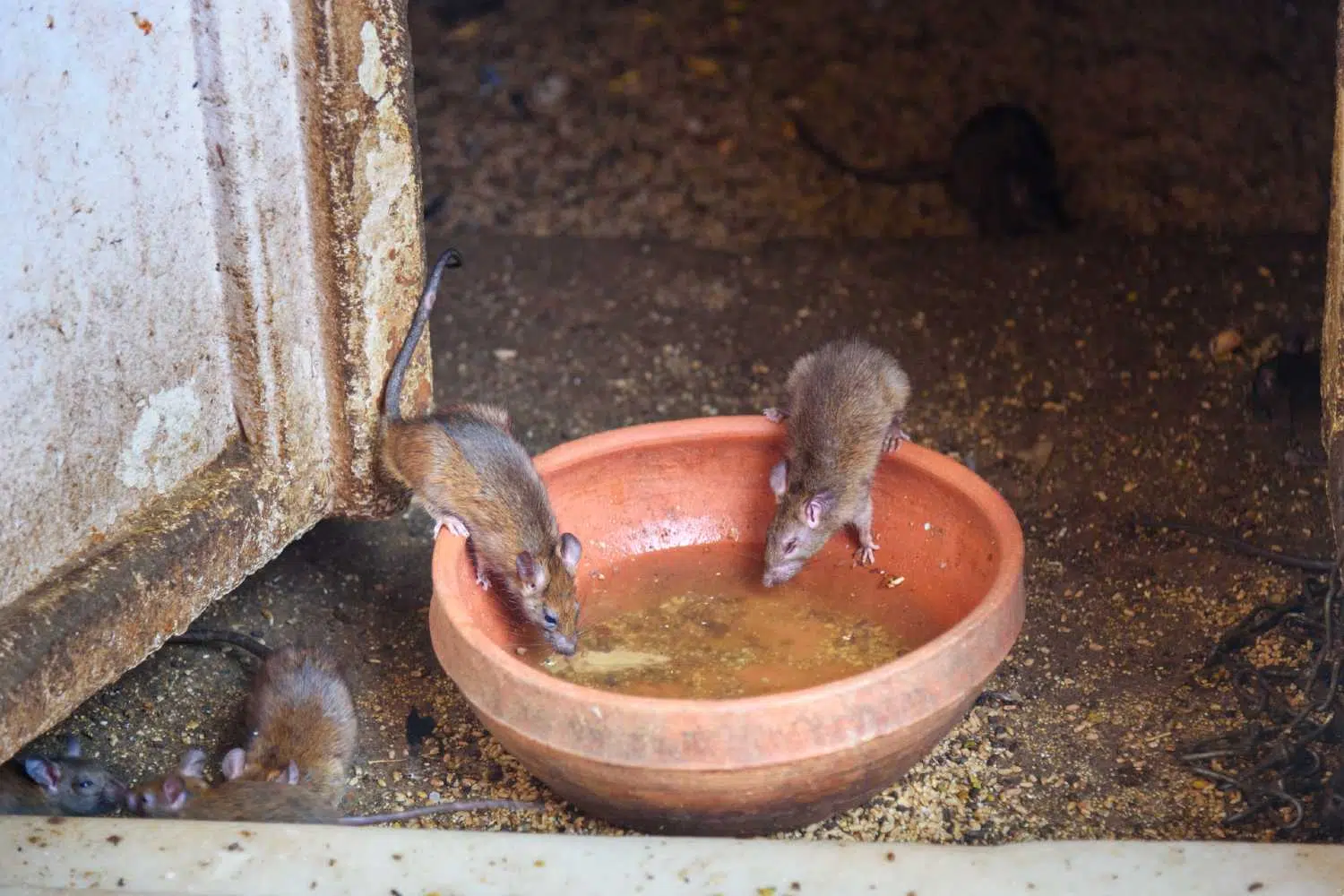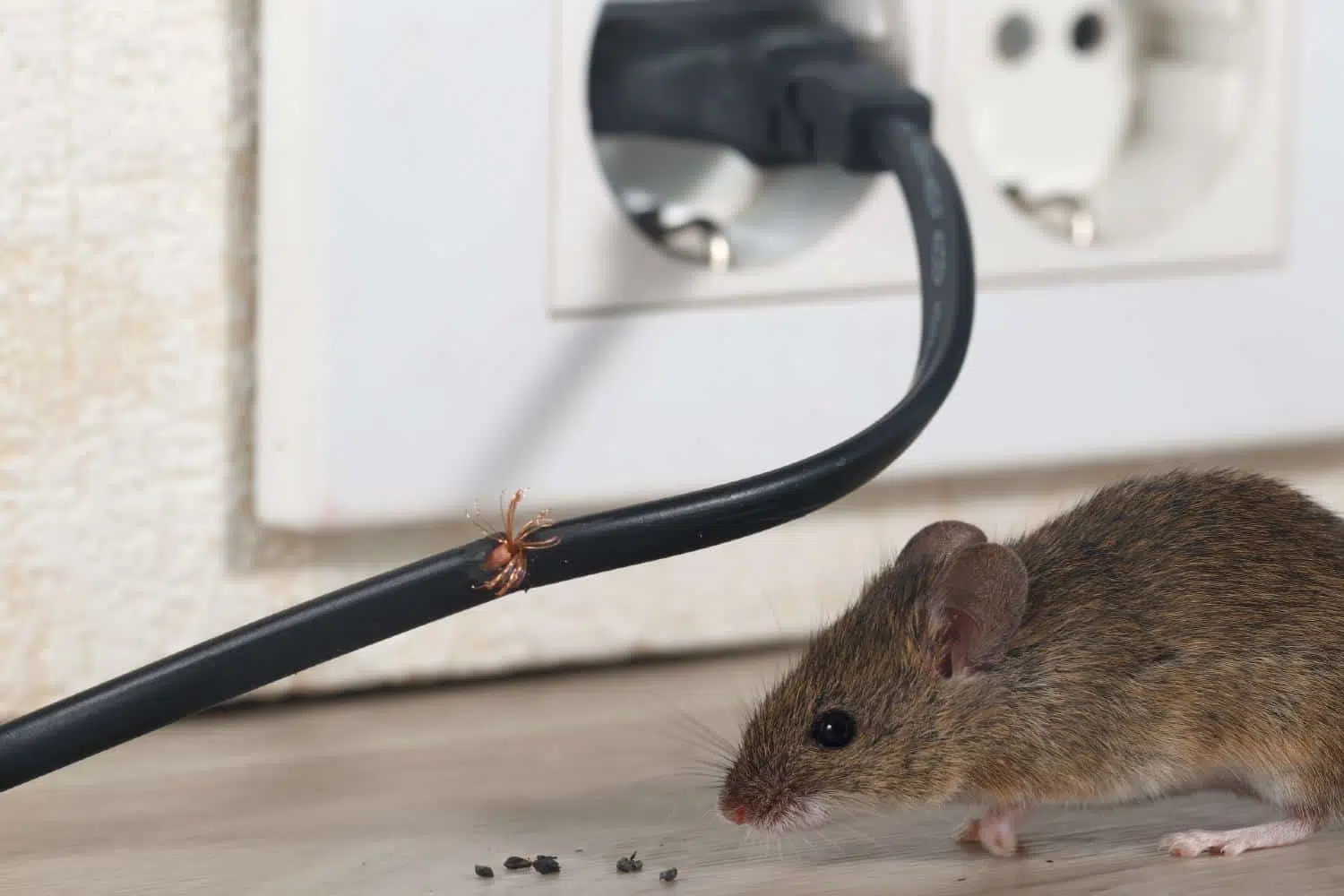Rat Vs Mice – How To Spot The Difference

Many people understandably confuse mice and rats as the same pest because they are both rodents, believing there is a slight difference between them (especially when trying to identify their droppings). In this article, we show the difference between the two pests including the health issues associated with them.
Physical Differences
There appear to be similarities between rats and mice. For example:
- They both have short legs and long tails
- Incisor teeth in their upper jaw
- An adult mouse can look like a young rat
But the similarities end here. Some of the distinct differences include:
Body
The body of the house mouse is 3cm-10cm long. The body of the black and the brown rat, 16-40cm long. The house mouse is small and light. The black rat and the brown rat are by comparison much larger and heavier. A mouse weighs about fifty grams, a rat three hundred grams.
Ears
The house mouse has large ears. The black and the brown rat have short ears.
Tail
House mice have shorter hairy tails. The black and the brown rat have thick, hairless tails.
Colour
The house mouse is usually a light grey or brown with a lighter shade on its underside. The black rat is black all over and likewise the brown rat.
If you want to distinguish between a mature mouse and a young rat, the young rat has smaller ears and much larger heads, and larger feet.
How To Tell Between Mouse Or Rat Droppings
The droppings you find should identify if you have a rat infestation or a mouse infestation. Rat droppings are shiny, black, and 12mm to 18mm long, whereas mice droppings are small and smooth with pointed ends and 3-8mm long. Rat droppings are around twenty times the mass of mouse droppings. Mouse droppings are deep brown when fresh and they get lighter with time. The blacker the rat dropping the fresher it is.
Rats vs Mice – Do they Behave Differently?
Mice are curious creatures, investigating what’s new in their surroundings whereas rats are cautious and will avoid new things in their path until they are familiarised with them. This is why pest controllers adopt different strategies for eradicating an outbreak of rodents.
Differences In Breeding
Mice on average have 4-16 pups per litter and 7-8 litters per year. Rats have 5-10 pups per litter and 3-6 litters per year.
Do Rats And Mice Live In The Same Habitats?
Rats and mice can live in the same habitats. These include:
- In areas surrounding fast-food restaurants. Even during daylight hours, it is not unusual to see rats and mice emerging from the nearby bushes looking for discarded food.
- By the bin areas of hospitals, offices, restaurants, homes, and hotels. These areas provide a plentiful supply of food with habitats close by in either the building or the surrounding area.
- Where there are stretches of water – from garden ponds to water-themed walkways.
- In the loft areas of homes and businesses where the presence of insulation materials and paper-based products enable rats and mice to construct nests.
- In the roof spaces underneath floorboards and in the wall cavities.
Rats need water to survive whereas mice don’t, so you would expect to see rats in your garden area more than mice. They will access water supplies via your pond, birdbath, and any receptacle that stores water (plant pot saucers are a reliable source of water supply). Rats will make their nests under rubbish, timber, and in drainpipes, and inside your compost area. You may find tunneling under your decking and the presence of rats inside your garden shed, greenhouse, office, and home, and so on. You are likely to see mice in any grain store – for example, if you feed the birds or if you have hens, your grain bins, even your bird feeder tables will bear evidence of mice.

If you live near a facility that prepares, stores, and distributes food, and they do not have a robust pest control policy in place or, they do not abide by all current health and safety legislation you are more at risk of experiencing a problem with rats or mice based on this. It is however unlikely that you will have an infestation of rats and mice on your property in the same areas at the same time because mice are deterred by the distinct odour of a rat and, rats will eat mice.
Do Both Mice And Rats Cause Damage?
Rats and mice are renowned for the extensive damage they can cause to property and indeed to the surrounding area such as the garden. Rats and mice use their sharp incisor teeth to gnaw through electrical wire and cabling, wire, aluminium, lead, and copper. Because rats especially must gnaw frequently to keep their teeth worn down, woodwork, electric cables, gas, and water pipes are at a very real risk of considerable damage. Gnawing through electrical cables presents a major fire hazard and disruption to the electrical systems especially given the cables tend to be those hidden in the cavity walls and roof voids and are therefore difficult to access.
A rat or mouse can gnaw undisturbed for some time before their droppings – usually the first sign of an infestation- has been noticed and you are on red alert. But the damage can be to a specific electrical appliance, and you are none the wiser until you come to use it.

Rats and mice do much more damage including the shredding of documents, cardboard and paper-based items and upholstered furniture are all fair game to a mouse or rat as they will use the material, they have shredded for nesting purposes. They will also shred plastic bags to access the contents within.
They will also tamper with food in your larder areas including dry foods accessed via insecure containers or packaging and any food that is unprotected – from the food you leave out on your work surfaces to the food you believe is stored safely away. The smell of their urine and droppings in the food indicate clearly you have a problem.
The biggest damage caused to your property by rats and mice however must be the trail of destruction they leave as they move around it – urine and copious droppings to mark their territory and grease smears, caused by their tales encountering surfaces.
Can Both Mice And Rats Create Health Issues?
One of the biggest concerns that any person has with an infestation of rats or mice is the danger they present to our health. Mice and rats spread disease. For example, they contaminate food with droppings, fur, and urine. They use their urine as a marker to lay out territory. They are carriers of several diseases, one of which is toxoplasmosis, which means they can pose a particular threat to pregnant women. Over and above rats and mice also carry salmonella, E. coli, tuberculosis, and listeria.
What To Do Next
So now you know some of the common differences between rats and mice you may look to some DIY options to get rid of them although depending on the level of infestation you may need a professional.
Please do not hesitate to contact us for guidance and advice if you are concerned that you may have a rodent issue. Professional treatment combined with guidance on what to do after the infestation has been eradicated should restore your peace of mind and ensure that the rats or mice do not return.
